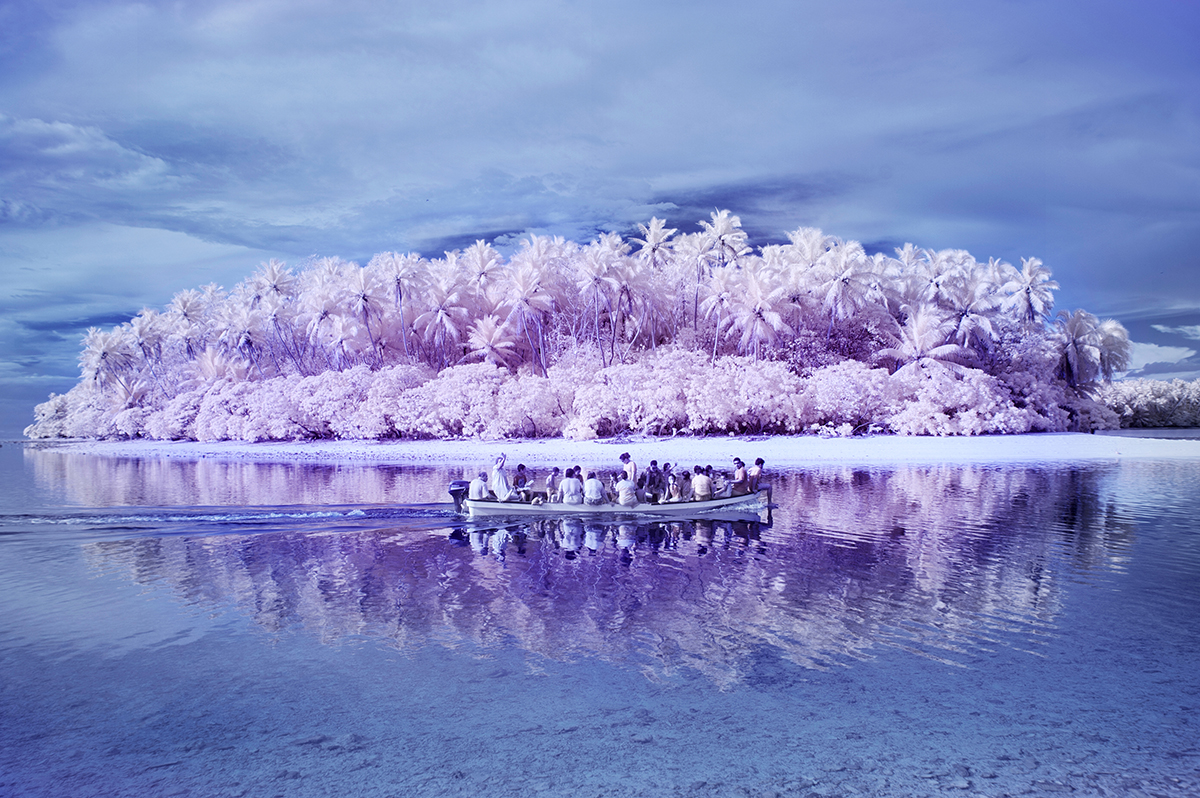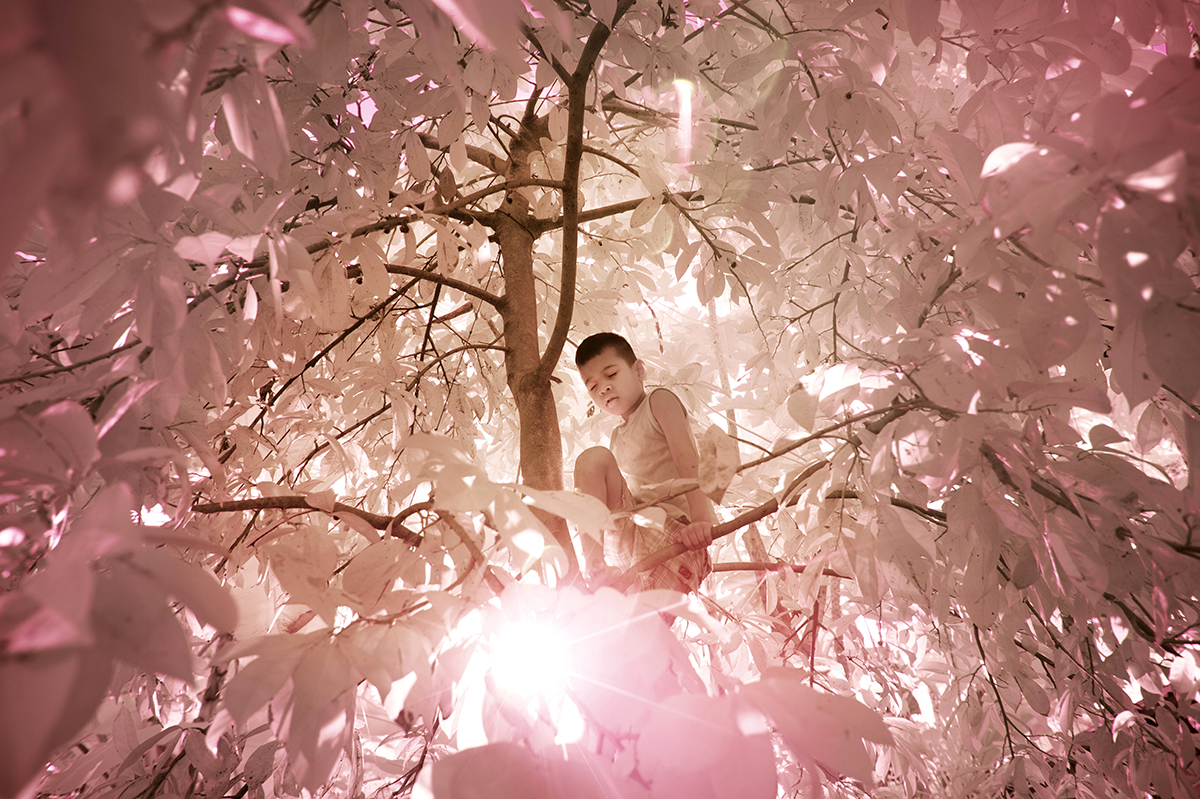THE ISLAND OF THE COLORBLIND — SANNE DE WILDE
by Benedetta Casagrande
21.10.2017

What are colors? How many hues are we not allowed to see through our human eye? Do we all see color the same way? Is my blue the same blue as yours? When I was a child I would spend hours ruminating over these questions. I dreamt to be the discoverer of a new color that nobody had ever seen before. No matter how hard I focused my energies or squinted my eyes, no new color ever revealed itself to me. In fact, it was such an extraordinary task that I also failed to imagine a new color. Color is unimaginable.
In the remote of the Pacific ocean lies a constellation of 600 small islands, scattered like pearls on a satin blue drape. Amongst the numerous atolls that form the Federal States of Micronesia we find Pingelap, an island rich of lush vegetation and untouched by paved roads or power vehicles. Pingelap is our island of the colorblind. Three percent of the Pingelapese community is affected by achromatopsia, a rare disorder which affects one person in thirty or forty thousand worldwide. This disorder not only makes it impossible for them to see color, but also prevents them from seeing fine detail in full daylight, to which they are extremely sensitive.
In 1775 ninety percent of the small population of Pingelap was killed by Typhoon Lengkiekie. Approximately twenty people survived, giving birth to a cycle of breeding (and inbreeding) which resulted in the spread of this rare genetic trait, locally called maskun (not-see). In the few years following 1820 the trait spread itself to more than five percent of the population.
Fascinated by rare genetic traits, belgian photographer Sanne De Wilde travelled to Pingelap and Pohnpei, a slightly bigger atoll, where she lived for one month amongst the Pingelapese and their community of colorblinds. Armed with an infrared-converted camera, De Wilde set off into a journey of visual research, following the steps of Oliver Sacks and acknowledging his omonimous work The Island of the Colorblind (1997). Through her lens the lush vegetation of the island is transformed; the heavy palm leaves are tainted hot pink, transfiguring the island into an oniric landscape.


As dreams are an interstice between experience and imagination, the reading of the oniric landscape has not to be understood as mere imaginative labour; it is as a space which constructs its meaning by tuning imagination to the diapason of experience. The monotone images of Sanne De Wilde tap into our imagination as an exotic novelty, but still preserve a familiar quality which brings the subjects closer rather than distancing the viewer. Whilst watching the images I find myself drift afar, but without ever losing the impression of being at home; something about the intimacy which transpires from the portraits of the Pingelapese anchors me, allowing me to observe the subjects with empathy and curiosity. The monotone photographs significantly solicit questions regarding the importance of colors in the way we experience the world. They do not serve as an example of how the Pingelapese might or might not see their surroundings; rather, they question the way we relate to space also through our perception of color. Exploring the limits of our own perception we are drawn close to the subjects, standing side by side in the attempt to understand each other’s unimaginable reality.
The Pingelapese community was far from passive during the making process. Sharing their own thoughts on color, and on whether or not they would like to be able to see the world in policrome, they allow us a glimpse of their inner way of experiencing colorblindness. Supplied with watercolor paint, they intervened by coloring black and white photographs which strikingly resemble the correct colors of the picture content. Their active participation in the project gave it a depth which would have been difficult to achieve otherwise; a wholesome collaboration which contributes in making The Island of the Colorblind such a successful project.

The politics of representation of underrepresented communities has been an ongoing debate in the field of contemporary photography. There is no simple solution to the quest for ethical representation; one must have a great ability to listen, observe, and shape into image the identity of the subject with as little bias as possible, whilst simultaneously creating a language which can be read and understood by the audience. De Wilde’s dream-like imagery successfully creates an access to a concealed reality. Picturing her subjects in harmonious communion with the fertile vegetation of the island and in the shades of their homes, their eye-lids lowering like theatre curtains to shield out excessive light, nothing hints towards a lack of control; they master their surroundings with grace, ultimately giving the impression that, perhaps, the difference between a life as a colorblind and a life as a non-colorblind might not be as profound as it seems.

info@ardesiaprojects.com